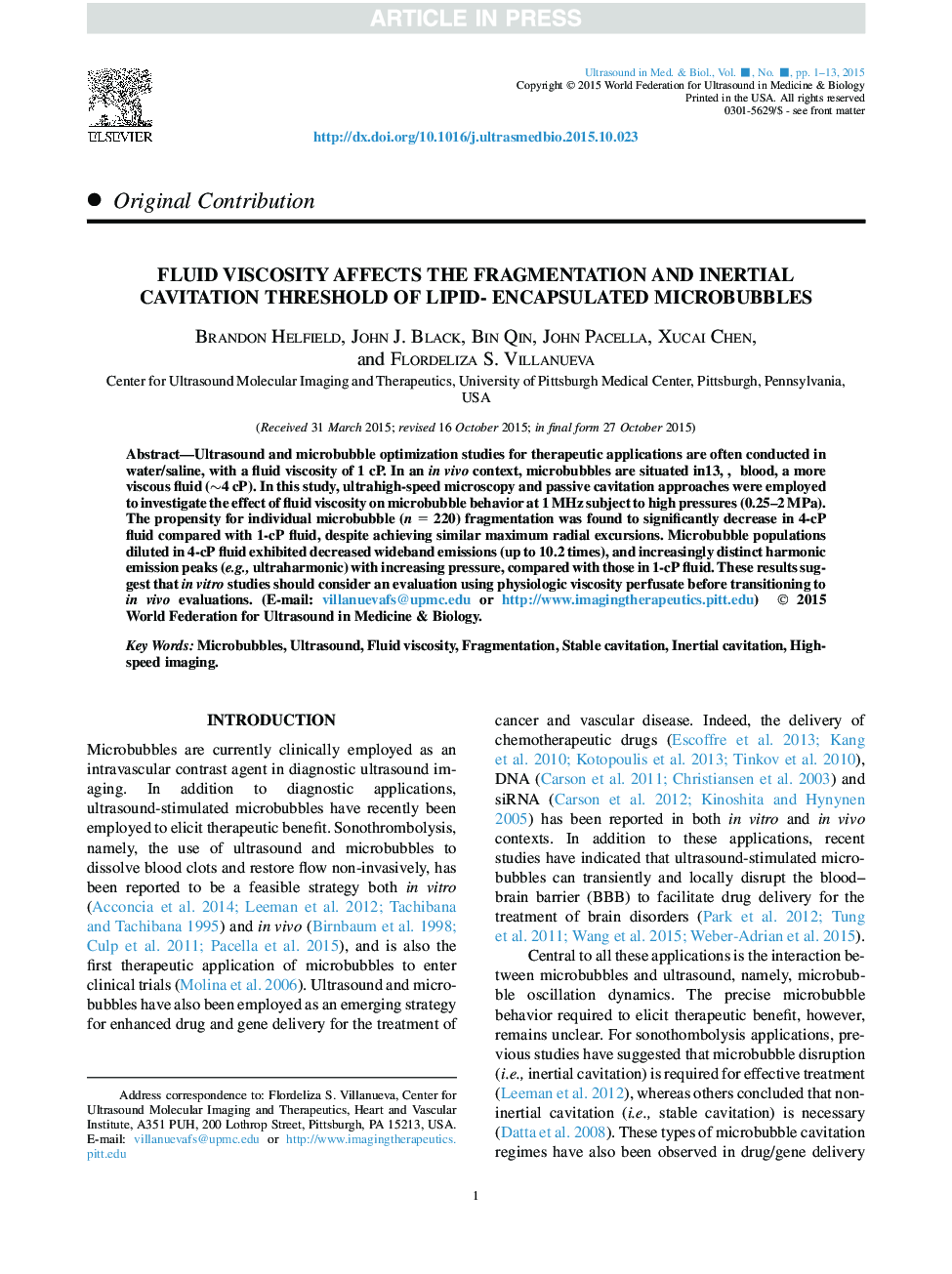| Article ID | Journal | Published Year | Pages | File Type |
|---|---|---|---|---|
| 10691192 | Ultrasound in Medicine & Biology | 2016 | 13 Pages |
Abstract
Ultrasound and microbubble optimization studies for therapeutic applications are often conducted in water/saline, with a fluid viscosity of 1 cP. In an in vivo context, microbubbles are situated in blood, a more viscous fluid (â¼4 cP). In this study, ultrahigh-speed microscopy and passive cavitation approaches were employed to investigate the effect of fluid viscosity on microbubble behavior at 1 MHz subject to high pressures (0.25-2 MPa). The propensity for individual microbubble (n = 220) fragmentation was found to significantly decrease in 4-cP fluid compared with 1-cP fluid, despite achieving similar maximum radial excursions. Microbubble populations diluted in 4-cP fluid exhibited decreased wideband emissions (up to 10.2 times), and increasingly distinct harmonic emission peaks (e.g., ultraharmonic) with increasing pressure, compared with those in 1-cP fluid. These results suggest that in vitro studies should consider an evaluation using physiologic viscosity perfusate before transitioning to in vivo evaluations.
Keywords
Related Topics
Physical Sciences and Engineering
Physics and Astronomy
Acoustics and Ultrasonics
Authors
Brandon Helfield, John J. Black, Bin Qin, John Pacella, Xucai Chen, Flordeliza S. Villanueva,
